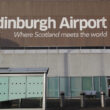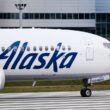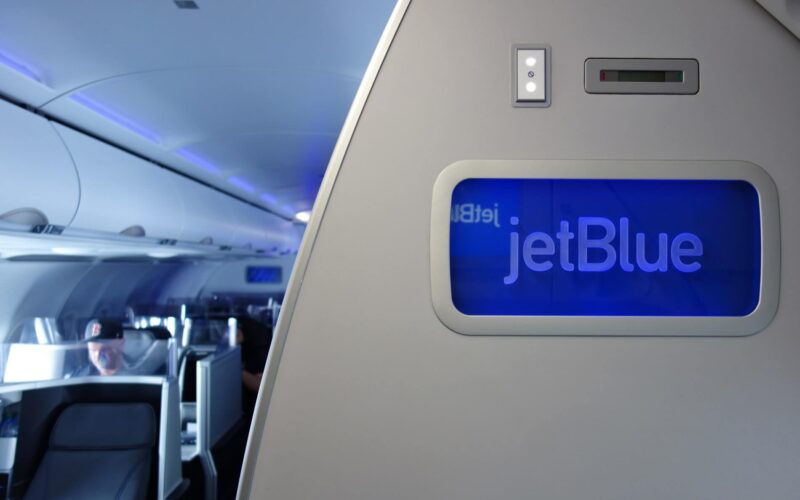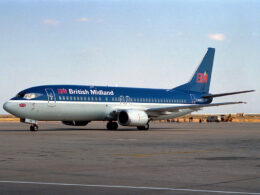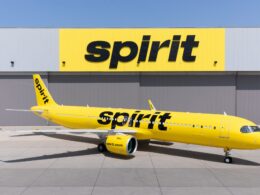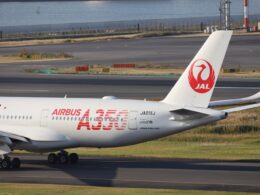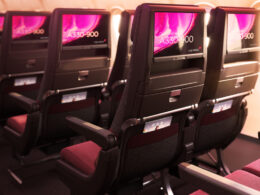A lot of companies had ambitious plans for the short-term future. While many have been derailed since, JetBlue (JBLU)’s plans to enter the transatlantic appear to be still on track. Despite postponing the launch to late-2021, the New York-based airline hinted at the livery its first Airbus A321LR will wear.
Deployed to operate longer routes, JetBlue (JBLU)’s first A321LR is due to arrive in 2021. The airline has sought to limit its capital expenditures, which directly affected its delivery schedule. Instead of 15 new aircraft throughout 2020, the airline will now take in only 8. In 2021, instead of the planned 23 Airbus-built jets, 17 would join JetBlue (JBLU)’s fleet, including five A321LRs. All in all, the company agreed with Airbus to defer several aircraft deliveries, as indicated in its Q2 2020 United States Securities and Exchange Commission (SEC) financial results filing. As a result, its capital expenditures will be reduced by $1.1 billion through 2020.
Nevertheless, JetBlue (JBLU) could still see transatlantic operations as a crucial part of its flight network. The airline’s A321LR, still in production, was teased on Twitter.
Color us excited! The rollout of our London service next year just got real with this sneak peek at our first new pond-hopping A321LR. The tailfin pattern is aptly named Streamers—as in jetstream and as in let’s jet the party started! pic.twitter.com/h82ommEb4j
— JetBlue (@JetBlue) September 22, 2020
“The rollout of our London service next year just got real with this sneak peek at our first new pond-hopping A321LR,” read the message on the social network. “We still plan on taking deliveries of the A321LR and launching service to London in 2021. The timing of our launch may shift later than initially planned as we continue to evaluate the impact of coronavirus and partner with Airbus on our delivery schedule,” added a JetBlue (JBLU) representative in an email to AeroTime News.
European expansion
First hints of JetBlue (JBLU)‘s expanding route network came in late-2018. In April 2019, the company confirmed the news and announced its intention to launch flights from New York John F. Kennedy International Airport (JFK) and Boston Logan International Airport (BOS) to one of London’s airports. Naturally, the aircraft chosen for the job was the Airbus A321LR. JetBlue (JBLU) converted 13 of its previously-held A321neo orders into the A321LR.
“The A321LR will allow JetBlue (JBLU) to tap into new long-haul markets that were not previously accessible with its current single-aisle aircraft,” read the announcement. With the introduction of the A321LR, the company would also introduce upgraded Mint and Core versions specifically for long-haul flights. The passenger experience on single-aisle aircraft, particularly flights that are a bit longer than average, has always raised concerns.
Luckily, JetBlue (JBLU)’s Mint configuration is equal to that of a business class configuration, including lie-flat seats. Currently, the product is available on coast-to-coast flights, which can take up to five hours to fly from Los Angeles Airport (LAX) to New York’s John F. Kennedy International (JFK) or Newark Liberty International Airport (EWR), for example. A flight from JFK to London Heathrow Airport (LHR) is not much longer on an A321 – according to greatcirclemapper.net data, it would take the aircraft around six and a half hours to land in the United Kingdom’s capital.
Thus, with an improved product to cater specifically for long-haul flights, JetBlue (JBLU) aims to target passengers that are in the middle: neither the first class travelers, nor the all-budget passengers.
“Travelers flying across the North Atlantic between the northeast U.S. and London have long faced sky-high fares – particularly in premium cabins – or mediocre service in a market effectively controlled by legacy carriers and their massive joint ventures,” read the airline’s announcement of the transatlantic services in April 2019.
Stiff competition
But the massive joint ventures will provide for stiff competition on transatlantic routes. Especially given the fact that operating flights from one side of the Atlantic to the other is a very lucrative and cash-generating route to take.
A fair few airlines have invested heavily in the routes. So much so, that several companies from different alliances have even pleaded with lawmakers in the United States and in the European Union to open up transatlantic travel between the two. Chief executives of American Airlines (A1G) (AAL), International Airlines Group (IAG) (IAG, a parent of British Airways, Iberia, and others), Lufthansa (LHAB) (LHA), and United Airlines signed the letter.
American Airlines (A1G) (AAL) and IAG subsidiaries were particularly exposed when travel between the EU and the US was suspended. The two, including Finnair, were under investigation by the European Commission (EC) and the United States Department of Transportation (DoT) of infringing EU competition rules. EC deemed that the parties infringed competition rules in 2010, and the three were forced to give up slots on routes from London to select cities in the United States, including Boston and New York.
While the authorities came to that decision in 2010, the repercussions of said decision are relevant to this day, especially to JetBlue (JBLU). Since the United Kingdom decided to exit the European Union, the UK’s Competition Market Authority has opened its own investigation in October 2018. On September 17, 2020, the CMA deemed that due to the current crisis and the fact that “it would not be appropriate to accept commitments offered by American Airlines (A1G) (AAL) and International Consolidated Airlines Group,” it announced that it would release a pair of slots on the London-Boston route. New entrants can potentially operate seven weekly flights from either Heathrow (LHR) or Gatwick (LGW) to Logan International (BOS).
The route would have to be inaugurated in the Summer 2021 season, according to Mazars, the monitoring trustee approved by the CMA. For JetBlue (JBLU), it would be the perfect opportunity to enter LHR or LGW, two very congested airports where slots are hard to come by. Even with the current state of the industry, Airport Coordination Limited (ACL), an organization that manages select airports capacity, indicated that it was only able to allocate 89% of the slot demand in LHR. In LGW, the number sits even lower – at 87.9%.
A golden opportunity, seemingly, was presented to JetBlue (JBLU) to acquire slots at one of London’s top airports. AeroTime News approached Mazars for comment.
Legacy airlines are not the only ones trying to milk the cash cow that is the Atlantic.
Low-cost Atlantic
Many airlines have attempted and fell flat on their faces by trying to take on the big boys flying across the pond. Primera Air, WOW Air, Joon are no longer around, while LEVEL and Norwegian Air Shuttle are barely lingering on. Eurowings, which Lufthansa (LHAB) (LHA) placed to fly long-haul itineraries, was pulled back to shift to short-haul flights within Europe in July 2019.
Nevertheless, Norwegian is still looking to make it work. Going forward, the low-cost carrier is revitalizing under a “New Norwegian” that will focus primarily on its “simple but high-quality low-cost offering,” as well as proven destinations. JetBlue (JBLU) will be stepping on its European counterpart’s toes, as Norwegian’s proven destinations were highlighted as London Gatwick Airport (LGW), John F. Kennedy International Airport (JFK), and Los Angeles International Airport (LAX).
“Long Haul operations remain very much part of the New Norwegian strategy on proven routes between key destinations,” stated Norwegian’s spokesperson. The airline continued to monitor the situation regarding travel restrictions and passenger demand, adjusting its network accordingly, added the media representative
However, the two airlines set out to make it work as well. In October 2019, the two signed a Letter of Intent (LoI) to form an interline partnership to combine the networks of the two.
At the time, the Norway-based airline’s chief financial officer stated that “this partnership will create a plethora of new route connections for customers on both sides of the Atlantic.” The preliminary plan was to start the partnership in Summer 2020, while passengers could have booked tickets on the two airlines’ networks starting from early-2020.
Whether that partnership is still on the table is unclear. According to a Norwegian spokesperson, “there is no further update regarding the interline agreement.”
However, for JetBlue (JBLU), brushing Norwegian aside would not be a very difficult job to do. Its cost base is much lower due to the fact that it would fly a narrow-body aircraft, rather than a Boeing 787. At the end of the day, purchasing an A321LR or A321XLR is a less capital extensive process than purchasing a 787-8 or a 787-9. When the European LCC is already in a very precarious situation financially, JetBlue (JBLU) making a dent in its market share is not too of an unlikely scenario. Adding in the fact that the New York-based airline is well, based there, and has significantly more brand power than Norwegian in the United Kingdom, puts JetBlue (JBLU) in a strong position to make strides at least in the lower end of the price market.

